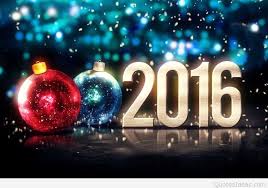Blog
Contact Us
Mobile: 008615515571373
Tel / Fax : 0086-371-63398802
Email :lisa@gelgoog.com
Skype :jacobyaogelgoog
ADDR:7th Floor,Building 8,Jingkai Square,No.1507, Hanghai East Road,Free Trade Zone,Zhengzhou,China.
Welcome 2016!
Publish admin On 2015-12-31
Today is the last day of 2015,soon we will walk into 2016. Now is the time to celebrete the new year and review the old year. And do you know the history of new year?
 During the Middle Ages in western Europe, while the Julian calendar was still in use, authorities moved New Year's Day variously, depending upon locale, to one of several other days, among them: 1 March, 25 March, Easter, 1 September, and 25 December. These New Year's Day changes generally reverted to using January 1 before or during the various local adoptions of the Gregorian calendar, beginning in 1582. The change from March 25 – Lady Day, one of the four quarter days – to January 1 took place in Scotland in 1600, before the ascension of James VI of Scotland to the throne of England in 1603 and well before the formation of the Kingdom of Great Britain in 1707. In England and Wales (and in all British dominions, including Britain's American colonies), 1751 began on March 25 and lasted 282 days, and 1752 began on January 1.[2] For more information about the changeover from the Julian calendar to the Gregorian calendar and the effect on the dating of historical events etc., see Old Style and New Style dates.
During the Middle Ages in western Europe, while the Julian calendar was still in use, authorities moved New Year's Day variously, depending upon locale, to one of several other days, among them: 1 March, 25 March, Easter, 1 September, and 25 December. These New Year's Day changes generally reverted to using January 1 before or during the various local adoptions of the Gregorian calendar, beginning in 1582. The change from March 25 – Lady Day, one of the four quarter days – to January 1 took place in Scotland in 1600, before the ascension of James VI of Scotland to the throne of England in 1603 and well before the formation of the Kingdom of Great Britain in 1707. In England and Wales (and in all British dominions, including Britain's American colonies), 1751 began on March 25 and lasted 282 days, and 1752 began on January 1.[2] For more information about the changeover from the Julian calendar to the Gregorian calendar and the effect on the dating of historical events etc., see Old Style and New Style dates.
 During the Middle Ages in western Europe, while the Julian calendar was still in use, authorities moved New Year's Day variously, depending upon locale, to one of several other days, among them: 1 March, 25 March, Easter, 1 September, and 25 December. These New Year's Day changes generally reverted to using January 1 before or during the various local adoptions of the Gregorian calendar, beginning in 1582. The change from March 25 – Lady Day, one of the four quarter days – to January 1 took place in Scotland in 1600, before the ascension of James VI of Scotland to the throne of England in 1603 and well before the formation of the Kingdom of Great Britain in 1707. In England and Wales (and in all British dominions, including Britain's American colonies), 1751 began on March 25 and lasted 282 days, and 1752 began on January 1.[2] For more information about the changeover from the Julian calendar to the Gregorian calendar and the effect on the dating of historical events etc., see Old Style and New Style dates.
During the Middle Ages in western Europe, while the Julian calendar was still in use, authorities moved New Year's Day variously, depending upon locale, to one of several other days, among them: 1 March, 25 March, Easter, 1 September, and 25 December. These New Year's Day changes generally reverted to using January 1 before or during the various local adoptions of the Gregorian calendar, beginning in 1582. The change from March 25 – Lady Day, one of the four quarter days – to January 1 took place in Scotland in 1600, before the ascension of James VI of Scotland to the throne of England in 1603 and well before the formation of the Kingdom of Great Britain in 1707. In England and Wales (and in all British dominions, including Britain's American colonies), 1751 began on March 25 and lasted 282 days, and 1752 began on January 1.[2] For more information about the changeover from the Julian calendar to the Gregorian calendar and the effect on the dating of historical events etc., see Old Style and New Style dates.
A great many other calendars have seen use historically in different parts of the world; some such calendars count years numerically, while others do not. The expansion of Western culture during recent centuries has seen such widespread official adoption of the Gregorian calendar that its recognition and that of January 1 as the New Year has become virtually global. (Note for example the New Year celebrations held in Dubai to mark the start of 2014, which broke the world record for the most fireworks set off in a single display,[3] lasting for six minutes and including the use of over 500,000 fireworks.)
Hope you all be a better yourself in 2016.

